A Major Milestone for Nature: Seven newly secured properties protected forever
31 May 2022
We have much to celebrate as the Nova Scotia Nature Trust announces seven newly secured properties across the province, the most conservation land we’ve ever secured within the same month! All together, these properties add a combined 970 acres of forever-protected wild land to our growing natural legacy.
Six of the properties were purchased through the combined support of individual donors, foundations and other partners as part of our Twice the Wild campaign, while a new Mabou Highlands property was generously donated to the Nature Trust by the Kinzer family.
The properties are spread across the province, and protect a varied representation of irreplaceable, unique landscapes and wildlife including significant concentrations of Eastern White Cedar forest, endangered Blanding’s turtle habitats, rare gypsum karst landscapes and more. Watch for more news, because in the months ahead, we will feature more details about each newly protected property.
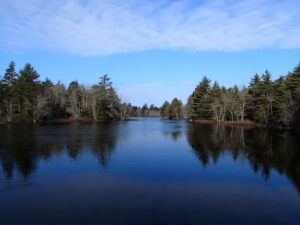
Upper Pleasant River
Two properties in the Pleasant River area each provide critical habitat for multiple species at risk, including the endangered Blanding’s Turtle. The first Upper Pleasant River property is a 37-acre inholding in the Pu’tlaqne’katik Wilderness Area in Southwestern Nova Scotia, while the second property is located next to the Wilderness Area and an important 126-acre addition to an existing land assemblage of Nature Trust protected areas. Both properties are heavily forested and include over a kilometre of shoreline along the Pleasant River.
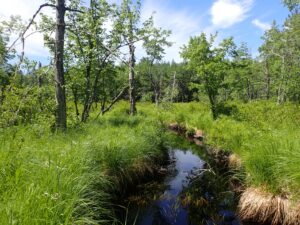
Delong Lake
The Delong Lake property consists of two parcels located to the immediate north of the Katewe’katik Wilderness Area. The 196-acre property provides critical habitat for the endangered Blanding’s Turtle and includes several hundred meters of shoreline along Delong Lake. It supports a mosaic of upland and wetland forest, as well as a riparian fen where a brook drains into the lake.
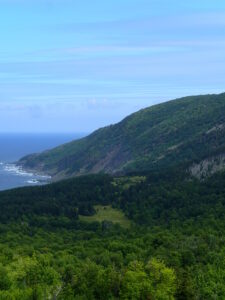
Mabou Highlands
The donation of a new Mabou Highlands property is an important addition to our Mabou Highlands Conservation Lands that will increase connectivity between Nature Trust lands and the Cape Mabou Wilderness Area. The property consists of 100 acres of mature forests that provide habitat for several species of interest, including moose and multiple bird species of conservation concern.
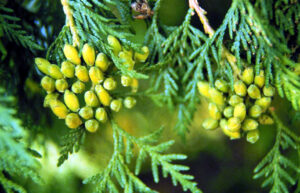
Eastern White Cedar
The Hectanooga property is located to the immediate south of the Hectanooga Cedar Swamp Nature Reserve and contains one of Nova Scotia’s most significant concentrations of vulnerable Eastern White Cedar forest. Conserving this 180-acre land offers long-term protection to the Eastern White Cedar that also provides important habitat for multiple other species at risk, including songbirds and multiple at-risk lichens.
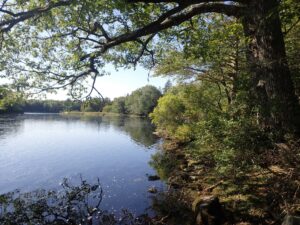
Lac de L’Ecole
Lac de L’Ecole consists of 181 acres of undeveloped land that is primarily forested and contains significant shoreline along the Tusket River and nearby lake systems. It is believed to be the only area in the province where Long’s Bulrush produces flowers and provides important habitat for other rare Atlantic Coastal Plain Flora, including the endangered Plymouth Gentian.
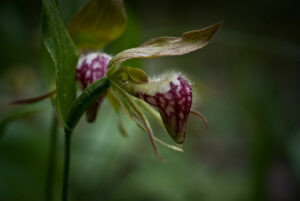
Ram’s Head Lady Slipper (Cypripedium arietinum, by Green Optics on Flickr)
The St. Croix property is a 150-acre addition to an existing Nature Trust land assemblage within the St. Croix area. This property supports mature karst forest, and a fascinating landscape of sinkholes and unique terrain. This property is also home to several species of conservation interest, including the endangered Ram’s Head Lady Slipper.
We consider any newly secured property a major achievement, but securing seven within one month is a true major milestone for our Twice the Wild campaign, with a goal to double the protected space for nature by 2025.
We could not be more proud or excited about the successful acquisitions of these seven properties and we are deeply thankful to all of our supporters who have made this win for conservation possible. And now our journey to forever conserve their natural legacies begins!
